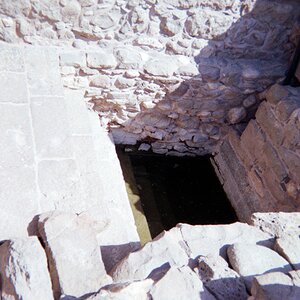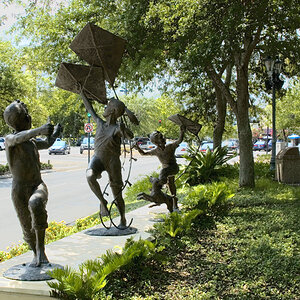Navigation
Install the app
How to install the app on iOS
Follow along with the video below to see how to install our site as a web app on your home screen.

Note: This feature currently requires accessing the site using the built-in Safari browser.
More options
You are using an out of date browser. It may not display this or other websites correctly.
You should upgrade or use an alternative browser.
You should upgrade or use an alternative browser.
Flash Question
- Thread starter wiley
- Start date
Garbz
No longer a newbie, moving up!
- Joined
- Oct 26, 2003
- Messages
- 9,713
- Reaction score
- 203
- Location
- Brisbane, Australia
- Website
- www.auer.garbz.com
- Can others edit my Photos
- Photos NOT OK to edit
Why would TTL metering not be an option for a given lens? The system of how TTL works is lens independent.
In any case to answer your question, manual flashes often have a guide on it. You set the guide to your ISO and aperture and it gives you a power level to distance scale. This along with depth of field indicators is a useful feature lost in time
These days it's take a photo, look at LCD, adjust, reshoot.
In any case to answer your question, manual flashes often have a guide on it. You set the guide to your ISO and aperture and it gives you a power level to distance scale. This along with depth of field indicators is a useful feature lost in time
These days it's take a photo, look at LCD, adjust, reshoot.
Derrel
Mr. Rain Cloud
- Joined
- Jul 23, 2009
- Messages
- 48,225
- Reaction score
- 18,941
- Location
- USA
- Website
- www.pbase.com
- Can others edit my Photos
- Photos OK to edit
Well, I would say to shoot outdoors in bright sun with a flash output level that is 2 and 1/2 stops to two and two-thirds to even three stops "under" the ambient light level. It is hard to be exactly specific on how much flash fill-in a person wants--it depends on the distance, the environmental location, and the desired "look" you are trying to achieve.
For "invisible" flash fill, something in the Minus 2.7 to Minus 3.0 stops of flash exposure compensation would be a good basic ballpark figure. Using a Nikon, I usually set the flash otuput to Minus 2.7 stops in bright sunshine,and that's about right, for me.
With a "dumb" non-dedicated manual flash, the easiest way to do it in Manual mode is to set the flash unit's ISO to an ISO value that is higher than your actual ISO in use; so, at 100 ISO, you'd set a manual flash to 800 ISO to figure out the appropriate aperture. 100-200-400-800 will give you a teeny-tiny squirt of flash, since the flash "thinks" it needs to emit the correct flash output for ISO 800...hence leading to a very small flash output, perfect for filling in the shadows without affecting the highlights.
With a manual flash that has Auto-Thyristor or "Auto Flash" a la the Vivitar/Sunpak/Metz systems, you would first set the appropriate sunlight exposure, let's say ISO 100 at f/11 at 1/250 second, and then use the Auto f/stop setting for a physically larger aperture, like the f/4 Auto Aperture setting; the flash will think the aperture is big in diameter, so the flash output will be very small. Using the f/4 Auto Aperture on the flash and the lens actually set to f/11 will result in a three-stop "underexposure" of the flash part of the exposure, which ought to be about right for very subtle fill-flash with the lens set to f/11 and shutter at 1/250 with ISO 100 in sunlight, mainly in backlighted situations.
With some cameras that have a base ISO of 200 and a top flash synch speed of 1/200 second or slower, it can be difficult to get good DAYLIGHT exposure settings when using flash unless you are willing to use a really small f/stop, like f/16---and then your sensor must be immaculately clean! or, resort to using a Neutral Density filter over the lens. In which case the amount you "lie" to a "dumb flash" is altered by the amount of the ND factor.
For "invisible" flash fill, something in the Minus 2.7 to Minus 3.0 stops of flash exposure compensation would be a good basic ballpark figure. Using a Nikon, I usually set the flash otuput to Minus 2.7 stops in bright sunshine,and that's about right, for me.
With a "dumb" non-dedicated manual flash, the easiest way to do it in Manual mode is to set the flash unit's ISO to an ISO value that is higher than your actual ISO in use; so, at 100 ISO, you'd set a manual flash to 800 ISO to figure out the appropriate aperture. 100-200-400-800 will give you a teeny-tiny squirt of flash, since the flash "thinks" it needs to emit the correct flash output for ISO 800...hence leading to a very small flash output, perfect for filling in the shadows without affecting the highlights.
With a manual flash that has Auto-Thyristor or "Auto Flash" a la the Vivitar/Sunpak/Metz systems, you would first set the appropriate sunlight exposure, let's say ISO 100 at f/11 at 1/250 second, and then use the Auto f/stop setting for a physically larger aperture, like the f/4 Auto Aperture setting; the flash will think the aperture is big in diameter, so the flash output will be very small. Using the f/4 Auto Aperture on the flash and the lens actually set to f/11 will result in a three-stop "underexposure" of the flash part of the exposure, which ought to be about right for very subtle fill-flash with the lens set to f/11 and shutter at 1/250 with ISO 100 in sunlight, mainly in backlighted situations.
With some cameras that have a base ISO of 200 and a top flash synch speed of 1/200 second or slower, it can be difficult to get good DAYLIGHT exposure settings when using flash unless you are willing to use a really small f/stop, like f/16---and then your sensor must be immaculately clean! or, resort to using a Neutral Density filter over the lens. In which case the amount you "lie" to a "dumb flash" is altered by the amount of the ND factor.
Similar threads
- Replies
- 16
- Views
- 1K
- Replies
- 9
- Views
- 237

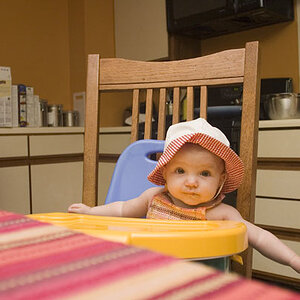
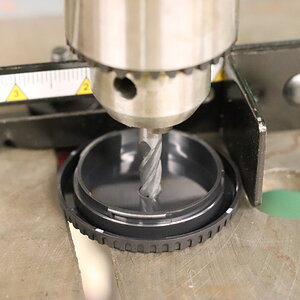
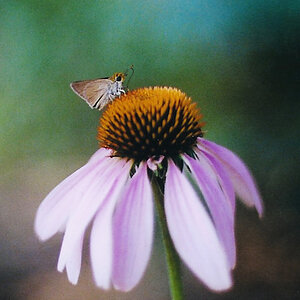


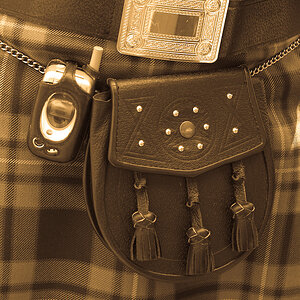
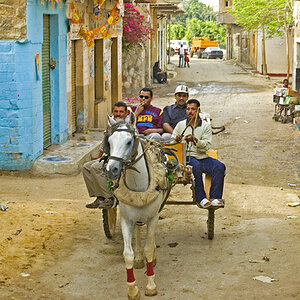
![[No title]](/data/xfmg/thumbnail/41/41895-34e19a98c1811c8d543811c45d6ca604.jpg?1619739935)
